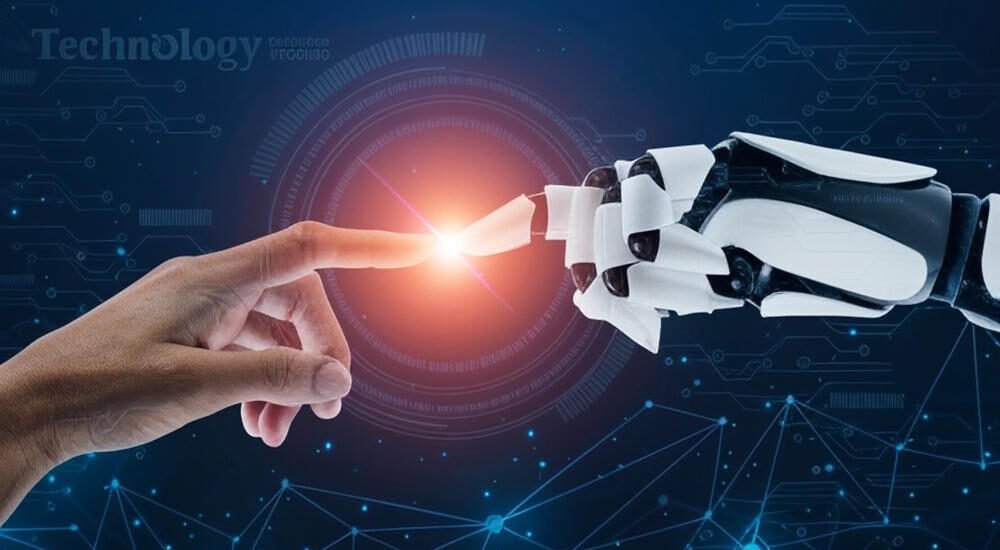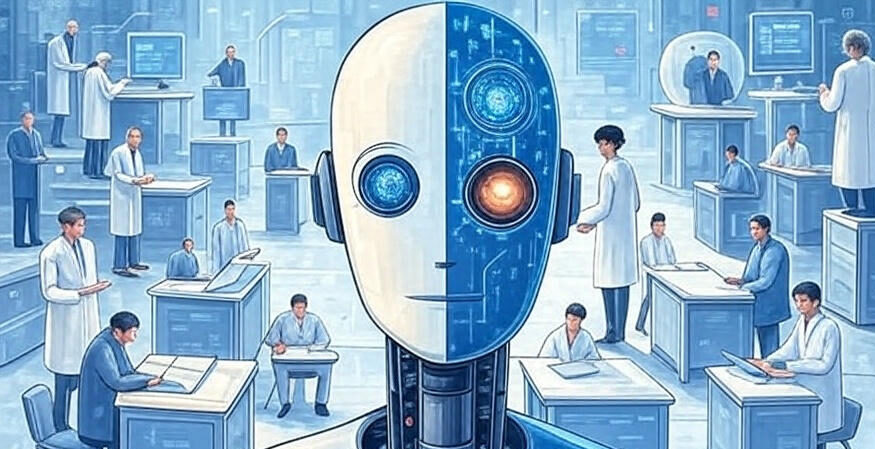
July 17, 2025
Artificial Intelligence (AI) market is exploding and could reach $758 billion by 2025 as per forecasts. Many experts are comparing this massive transformation in the direction of an Industrial Revolution, as AI transforms economies, industries and everyday life at an unprecedented pace. In the midst of this revolution is the booming demand for AI-specific chips leading to a $150 billion market in semiconductors, that is driven by the explosive growth of cloud-based data centers. From the most cutting-edge technologies to global issues to global challenges, the AI revolution is changing our world in dramatic ways.
AI: The Engine of a New Economic Era
The rapid rise of AI is changing industries ranging from healthcare to finance, to logistics and entertainment. By 2025, AI-powered systems optimize supply chains and personalizing the experience of consumers, and transforming the medical diagnosis. Autonomous cars are becoming increasingly widespread, driven through AI algorithms that can process huge amounts of live data. In finance, AI-driven analytics are helping improve the strategies for trading and managing risk as well as retail. Generative AI is in a position to design highly personal advertisements.
The impact on the economy is immense. The potential of AI is compared to that of the Industrial Revolution, when steam engines and mechanization transformed global productivity. At present, AI is the catalyst for a new phase of growth and development and the market is expected to expand by an annual compound rate of growth (CAGR) more than than 30 percent through 2035. This growth is not just about software breakthroughs–hardware is playing a pivotal role in enabling AI’s dominance.
The AI Semiconductor Boom: A $150 Billion Market

The core of AI’s explosive growth is in specially-designed chips, such as Graphics Processing Units (GPUs) and Tensor Processing Units (TPUs). These chips are made to cope with the enormous computation demands that come with AI tasks, ranging from the training of intricate neural networks, to processing real-time calculations for applications such as natural language processing, along with computer vision. By 2025, AI semiconductors will have AI semiconductor market is expected to reach $150 billion driven by the worldwide race to construct and grow cloud data centres.
The tech giants NVIDIA, AMD, Intel as well as Google have been leading the way making chips that are optimized to perform AI tasks. For instance, NVIDIA’s GPUs are now the standard of developing large models of language as Google’s TPUs run their cloud-based AI services. In addition, new startups and competitors are joining the game and are developing new generation chips such as neuromorphic processors that replicate the efficiency of human brains for reducing energy use.
The growing popularity in cloud-based data centres is the main reason for this growth. Organizations such as Amazon Web Services, Microsoft Azure as well as Google Cloud are investing billions to expand their infrastructures which will allow businesses across the world to gain access AI capabilities. But, Semiconductor supply chains remain strained, with geopolitical tensions–particularly around Taiwan, a global chip manufacturing hub–raising concerns about potential disruptions. Risks to cybersecurity, for instance recent cyberattacks linked to China that target Taiwan’s semiconductor industry highlight the risks.
Innovations on the Horizon
As we look to 2035 in the future, the AI world is in the process of advancing to further advances. Quantum computing and neuromorphic chips are expected to unleash the next level of AI performance, while also solving issues with energy efficiency. Quantum AI can revolutionize areas like material science and cryptography as well as neuromorphic chips may provide ultra-low power AI devices to use edge computing such as for wearable devices and IoT systems.
We’re getting glimpses of the future of AI. Generative AI models are powering the creative industries that produce everything from musical compositions to architectural design. For healthcare the use of AI-driven diagnostics is allowing doctors to detect cancer and other diseases with astonishing level of accuracy. In the field of agriculture AI optimizes yield of crops using precision agriculture. In addition, smart cities are making use of AI to regulate transportation, decrease energy use and improve safety for the public.
Challenges and Ethical Considerations

The AI revolution does not come free of obstacles. The speed at which AI is being adopted has raised concerns over job loss since automation is changing the nature of job market. By 2025, technology giants such as Microsoft, Google, and Amazon are announcing significant layoffs – more than 100,000 worldwide this year. This is largely due to move towards AI-driven processes. Organizations and governments are charged with training workers to be successful in an AI-driven economic system.
The ethical questions are also on the horizon. The biases of AI algorithms, privacy concerns and possible misuse of AI for surveillance or misleading campaigns are prompting discussions across the globe. Initiatives such as that of Tech Diplomacy Global Forum in Paris address these concerns and promoting accountable AI governance and collaboration across borders for equitable gains.
Sustainability is a further major issue. Learning massive AI models takes a lot of energy and raises questions about carbon footprints. Technologies like energy-efficient chips as well as energy-efficient data centers powered by renewable sources are steps towards reducing the impact of this, however, the AI industry needs to continue to focus on eco-friendly AI options.
The Road to 2035
The size of AI’s market is expected to grow towards the trillions before 2035, the impact is only going to increase. From autonomous logistics systems to AI-driven drug discovery, the opportunities are numerous. But, the way forward must be a balance between innovation and accountability. Technology leaders, policymakers as well as the general public should work in tandem to tackle the ethical, economic, as well as environmental problems.




